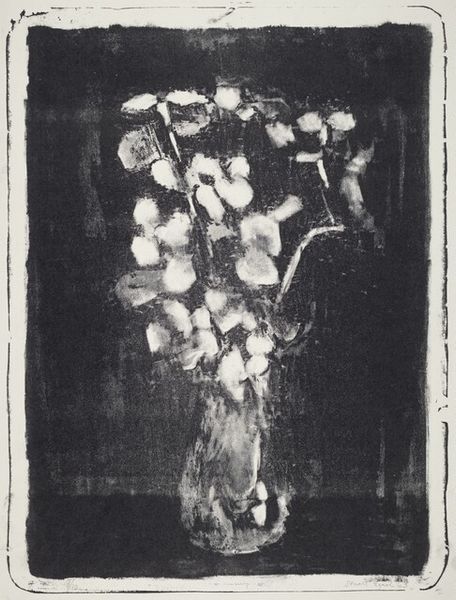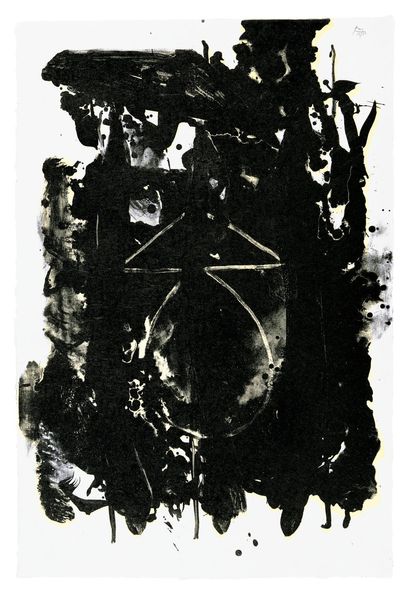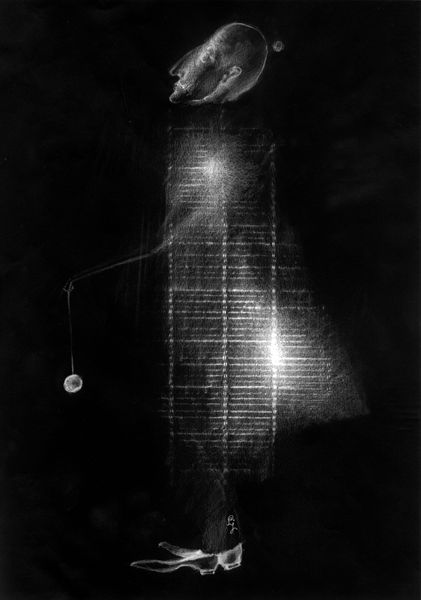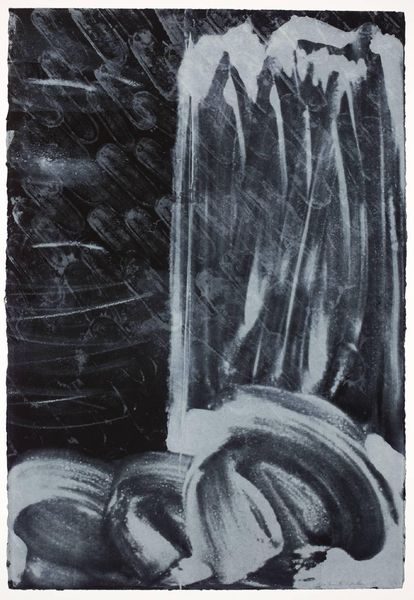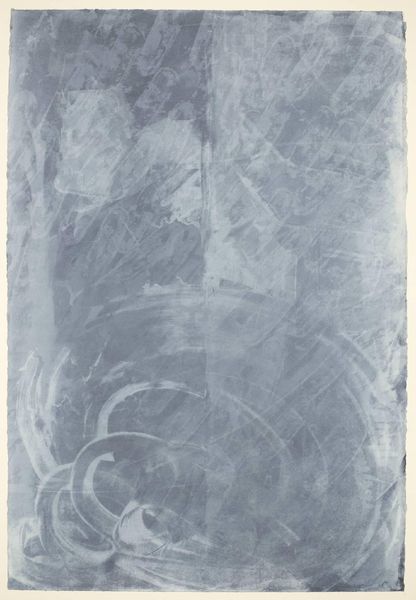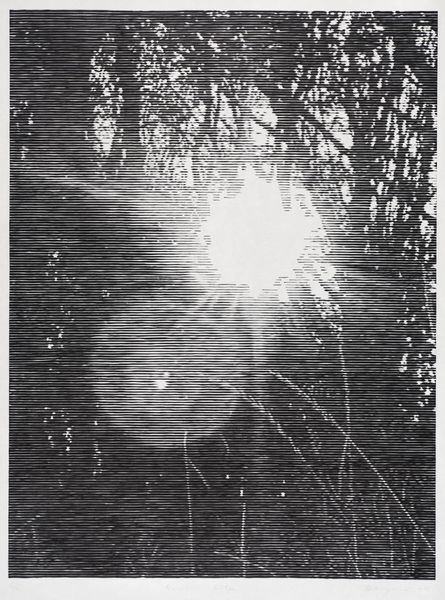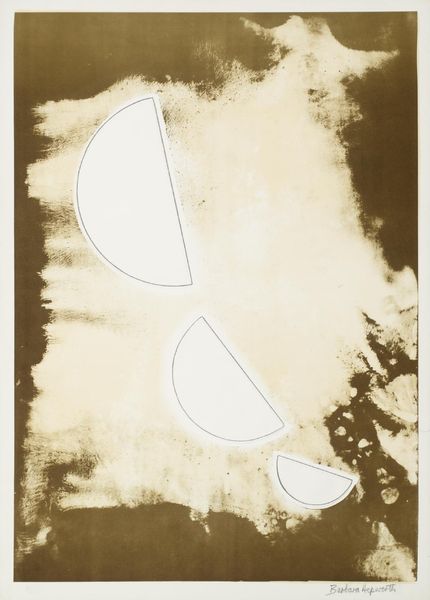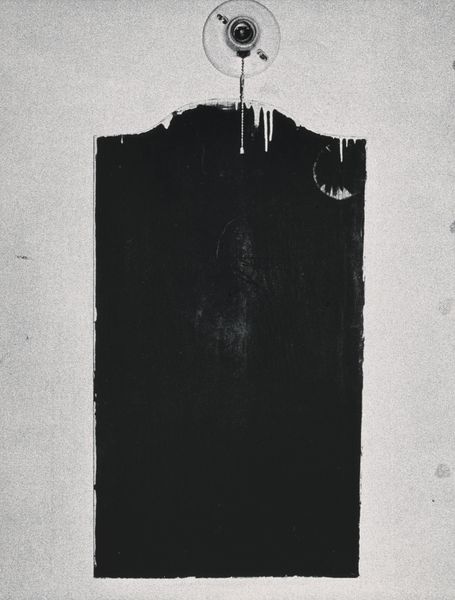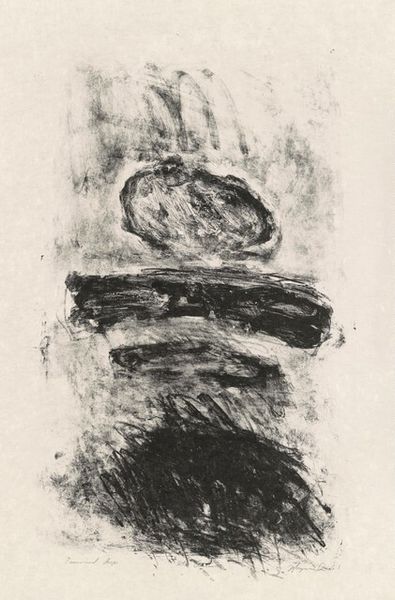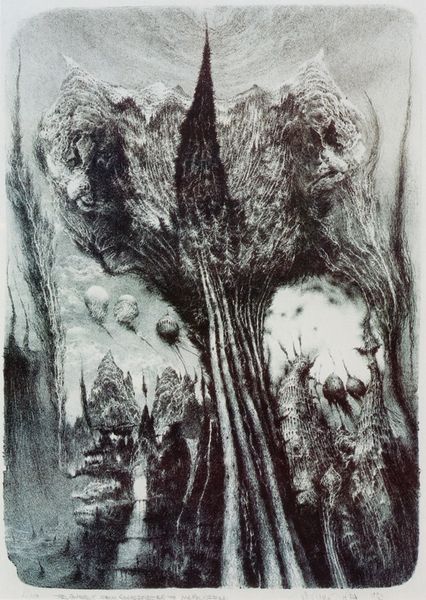
Dimensions: support: 416 x 273 mm
Copyright: © Veronica Ryan | CC-BY-NC-ND 4.0 DEED, Photo: Tate
Curator: Veronica Ryan's work, entitled Loss of Selves, Place and Transformation, immediately strikes me as a ghostly echo. It's quite unsettling. Editor: The stark contrast between the monochromatic photograph and the dense white paint evokes feelings of erasure and obscured memories. Curator: Absolutely. The overlay, that opaque, gestural painting, it's like a shroud. The image underneath—what appears to be a dress and a face—hint at a personal narrative trying to break through. Editor: Given Ryan’s background, the concept of displacement might be central. How do we reconcile a fragmented sense of self when our sense of place is disrupted, erased? Curator: Transformation is key, and the white could signify a ritualistic act of cleansing, or perhaps the blank canvas of a new identity being forged. Editor: The layers of meaning within such a simple presentation, it’s a powerful testament to the complexities of identity, isn’t it? Curator: Indeed. It leaves you contemplating the weight of history and the resilience required to reconstruct a self.
Comments
tate 6 months ago
⋮
http://www.tate.org.uk/art/artworks/ryan-loss-of-selves-place-and-transformation-t07774
Join the conversation
Join millions of artists and users on Artera today and experience the ultimate creative platform.
tate 6 months ago
⋮
This work is one of three drawings in Tate’s collection (see also Gravitas Profundis II 2000, Tate T07772 and Gravitas Profundis III 2000, Tate T07773) that Ryan made while she was artist in residence at Tate St Ives (1998-2000). During this period, Ryan worked in the former studio of Barbara Hepworth (1903-1975). Hepworth had moved to St Ives shortly before the outbreak of World War II, and lived and worked in the area for the remainder of her life. She was interested particularly in the qualities of form and space, and her carved sculptures were often pierced expressing a concern with internal and external forms. While in residence in the studio, Ryan made a series of works that responded to Hepworth’s practice while simultaneously addressing her own concerns. Ryan found the Cornish peninsula reminded her strongly of the island of Montserrat in the Caribbean where she was born and lived until emigrating with her family to the United Kingdom as a young child. These similarities prompted Ryan to revisit childhood memories in the work she made at St Ives.
